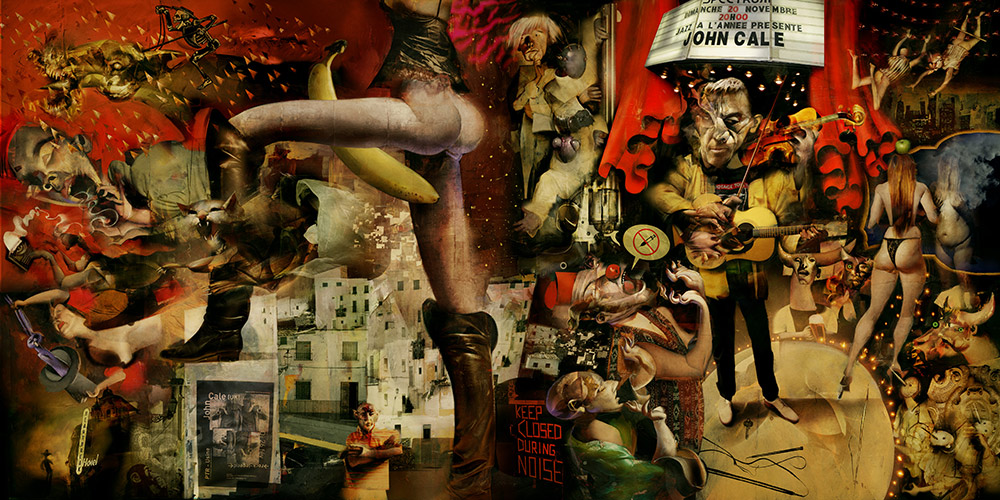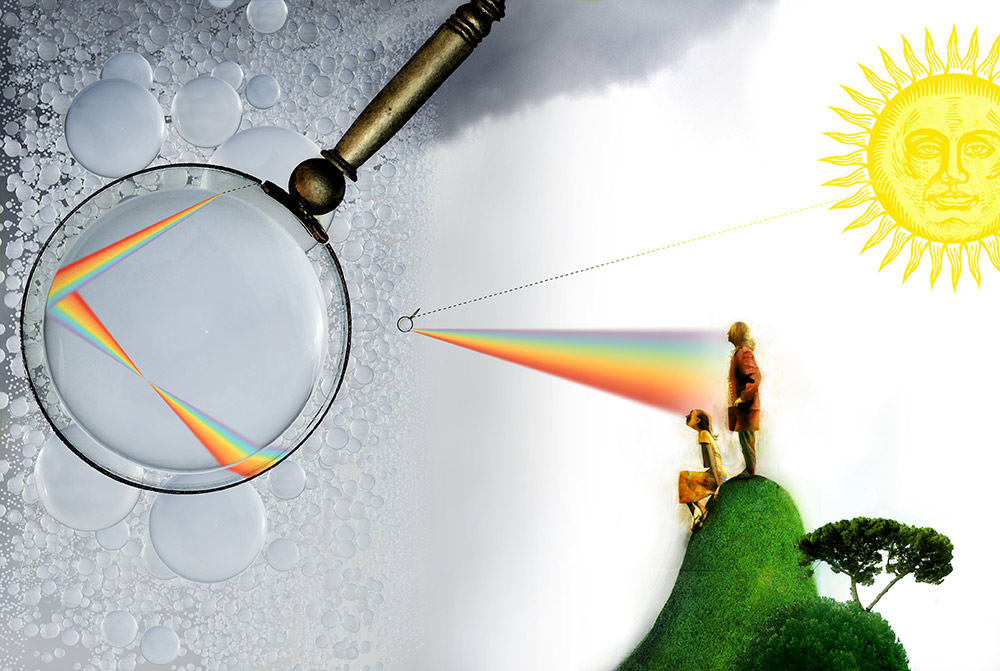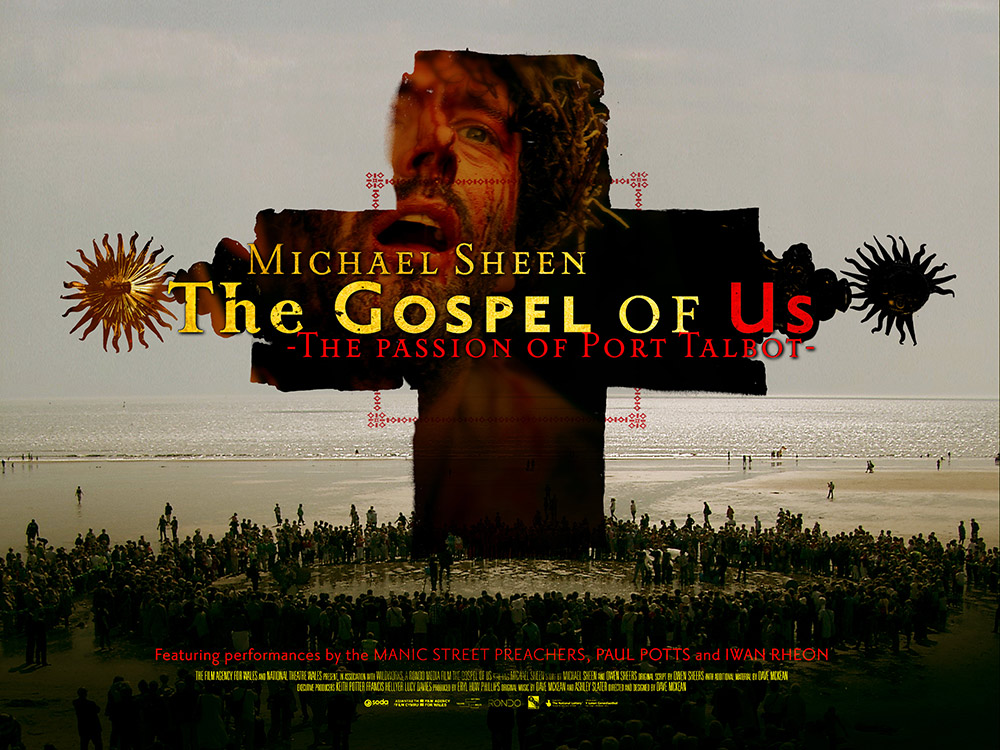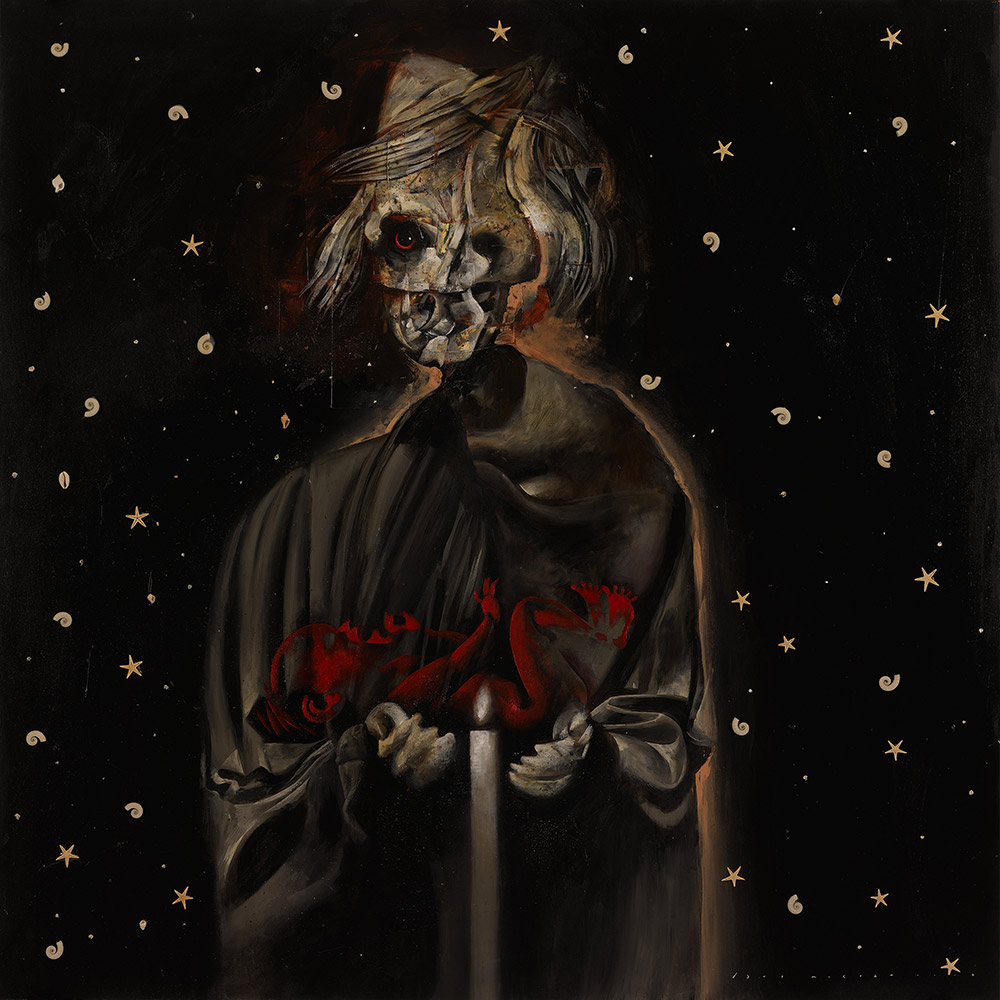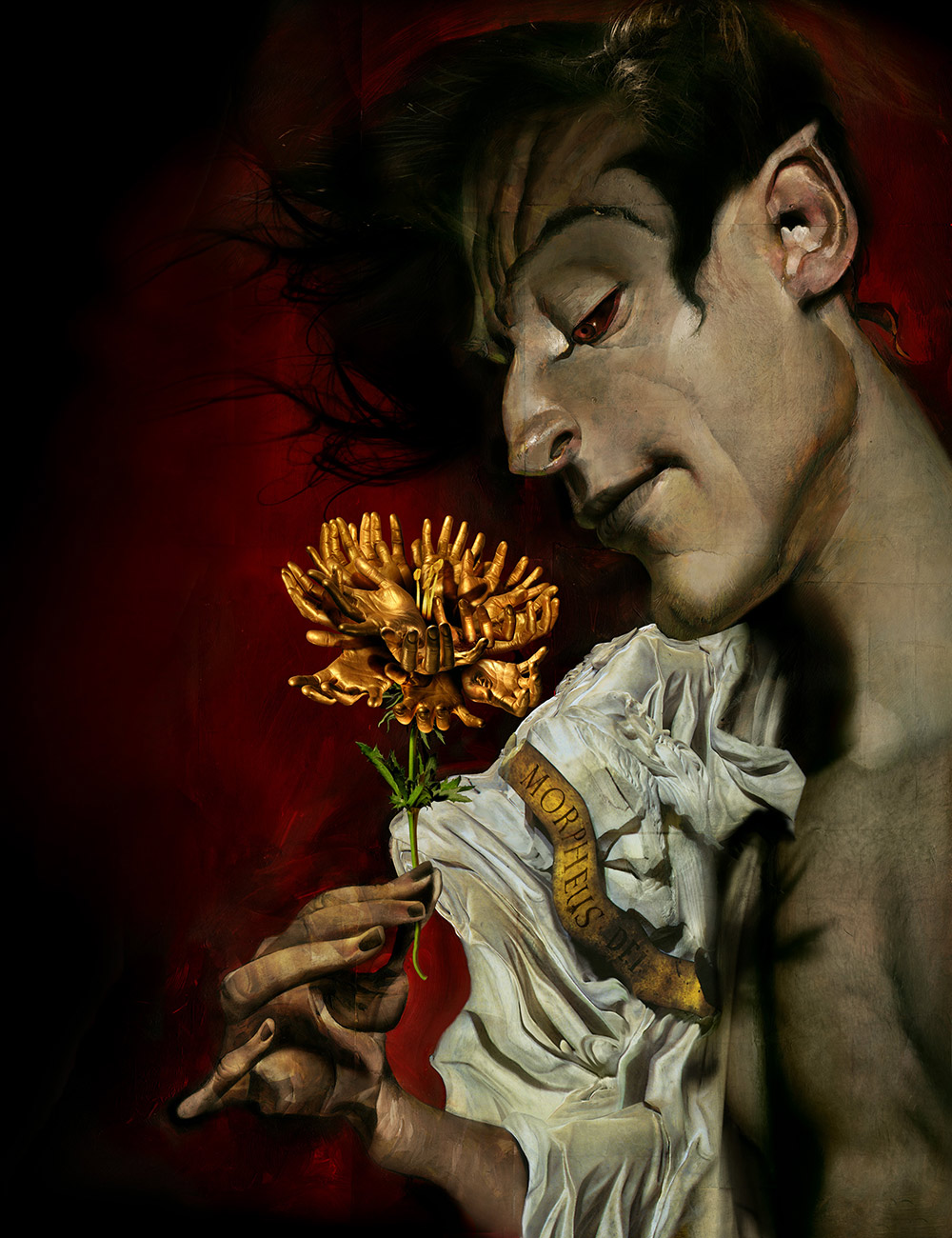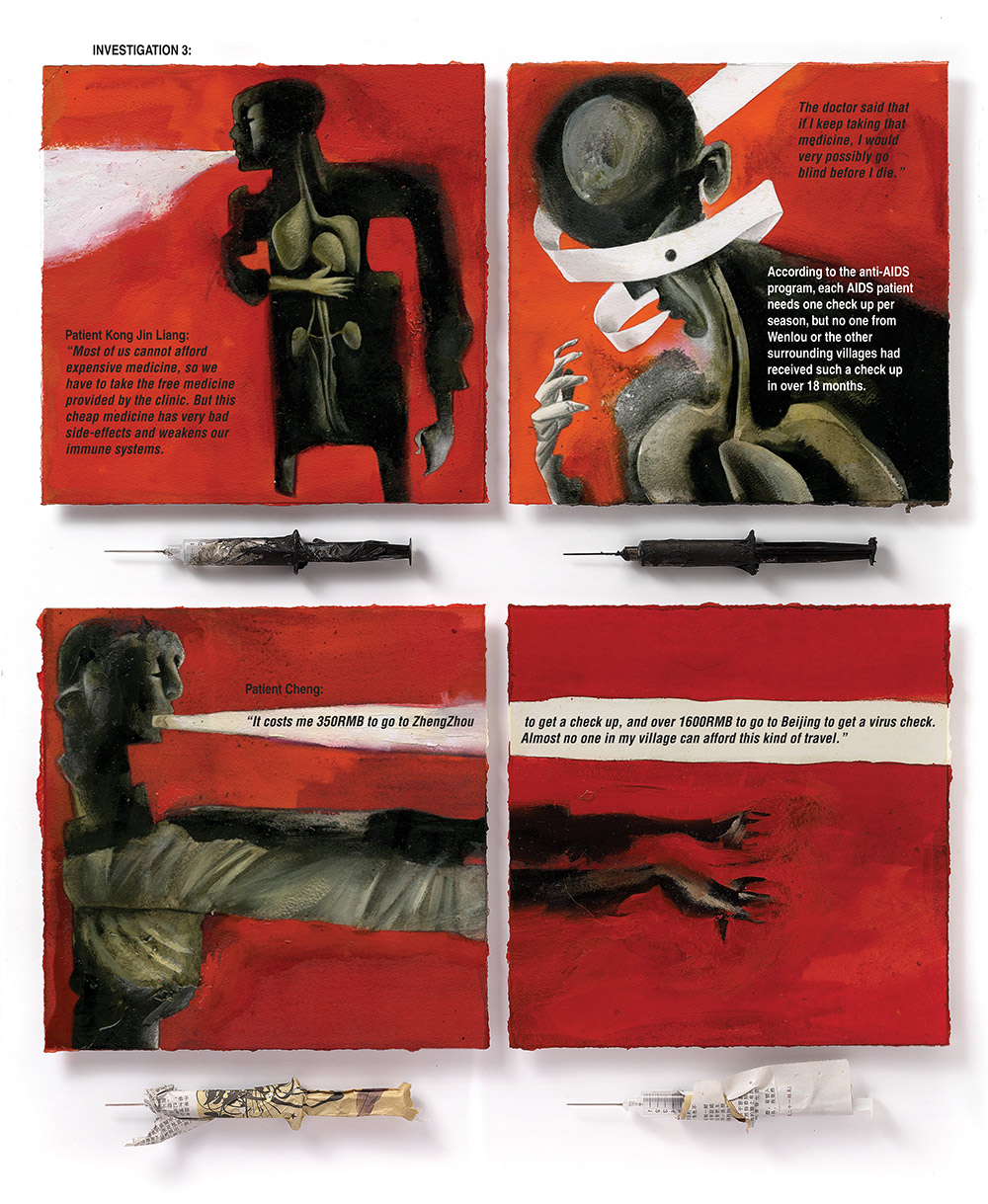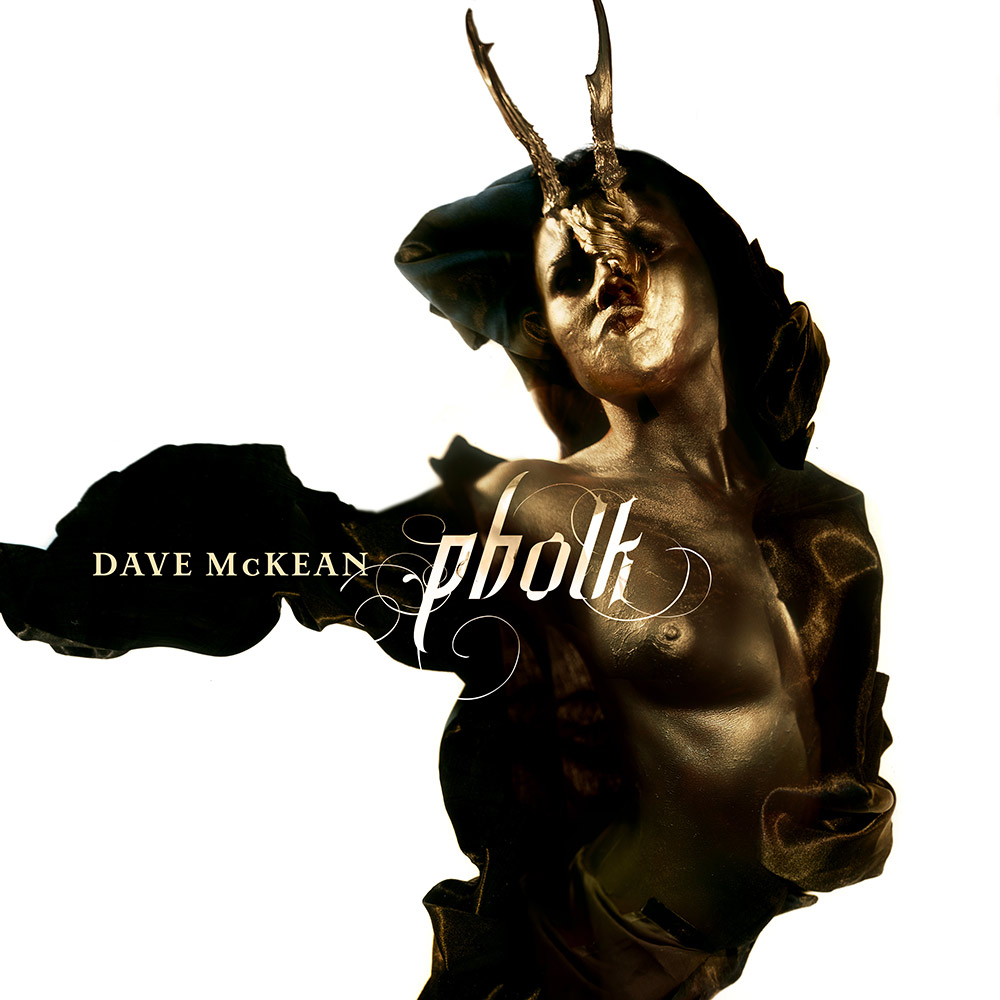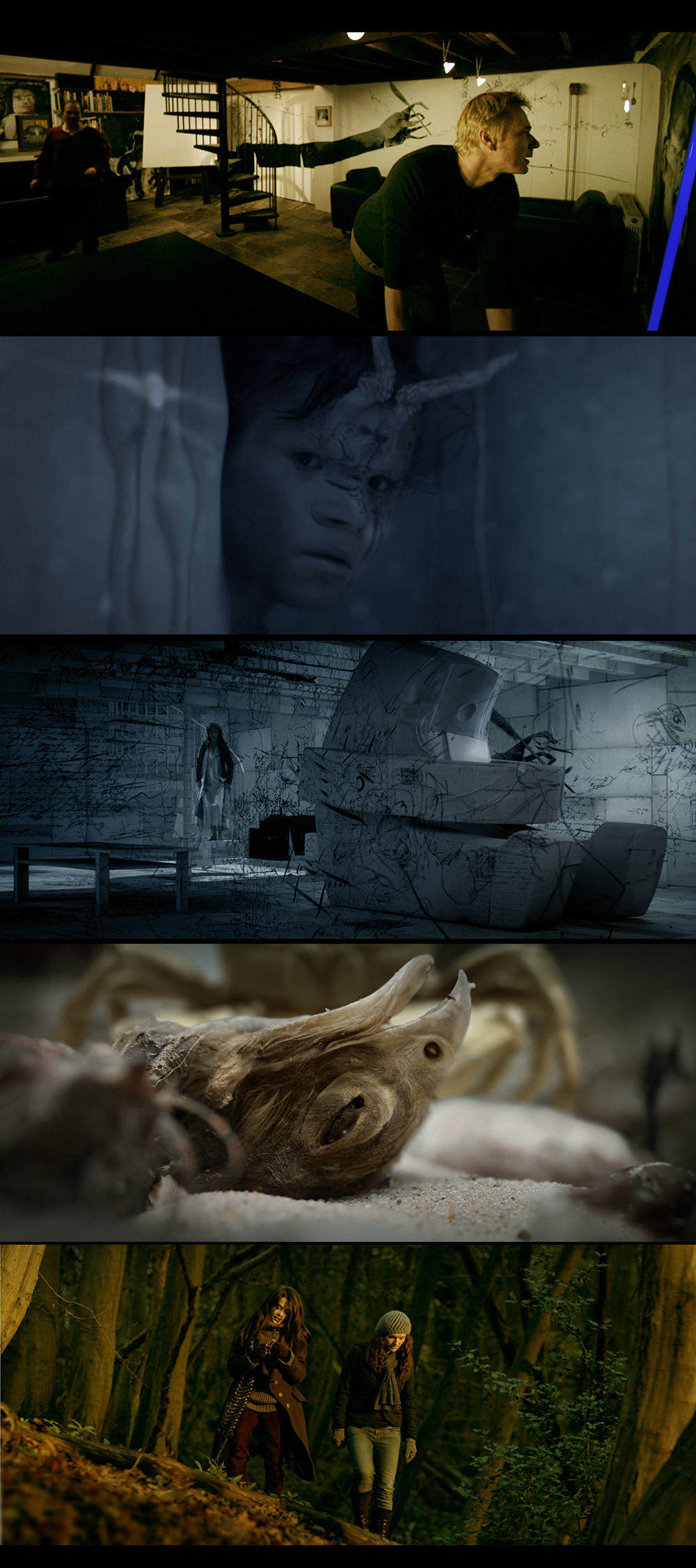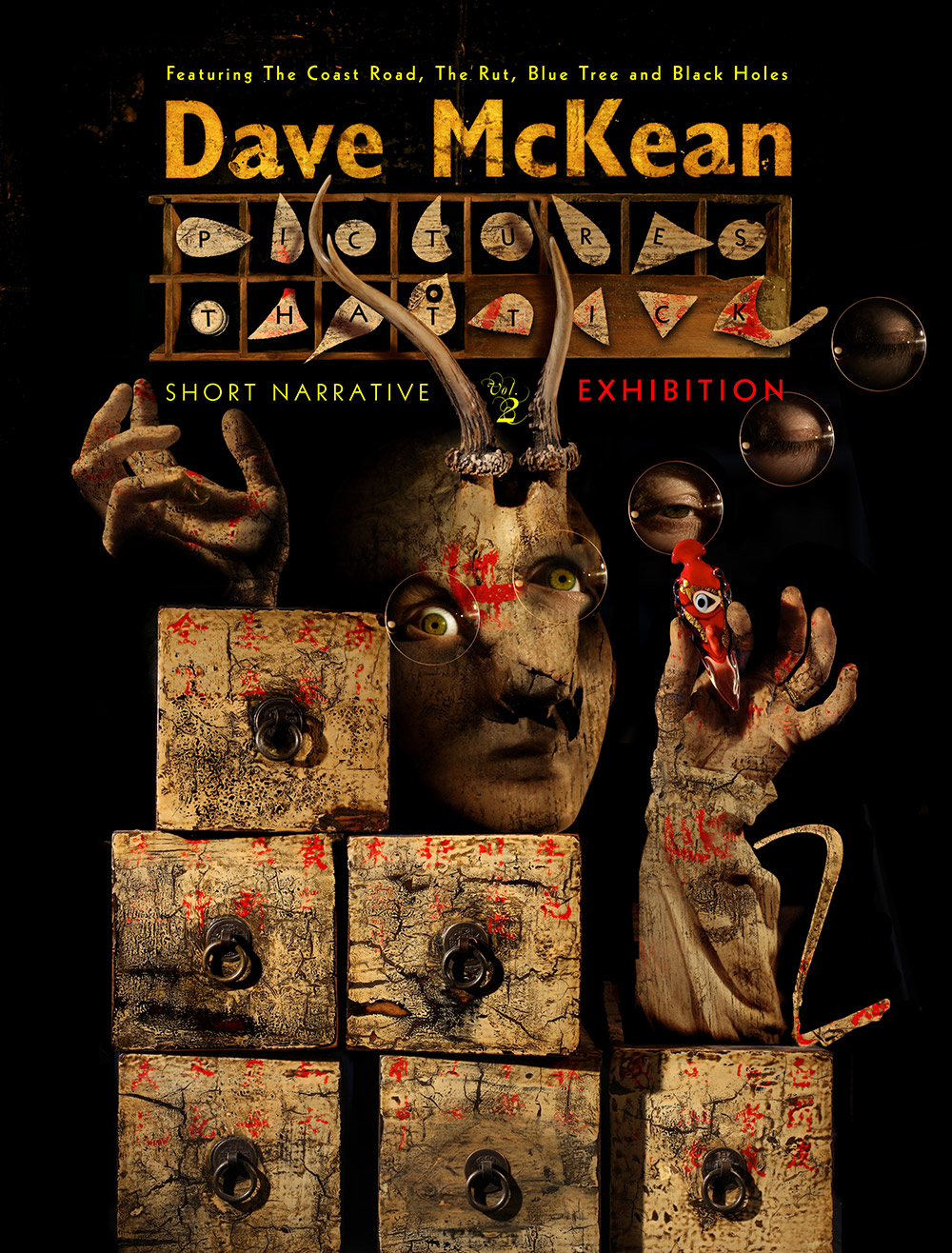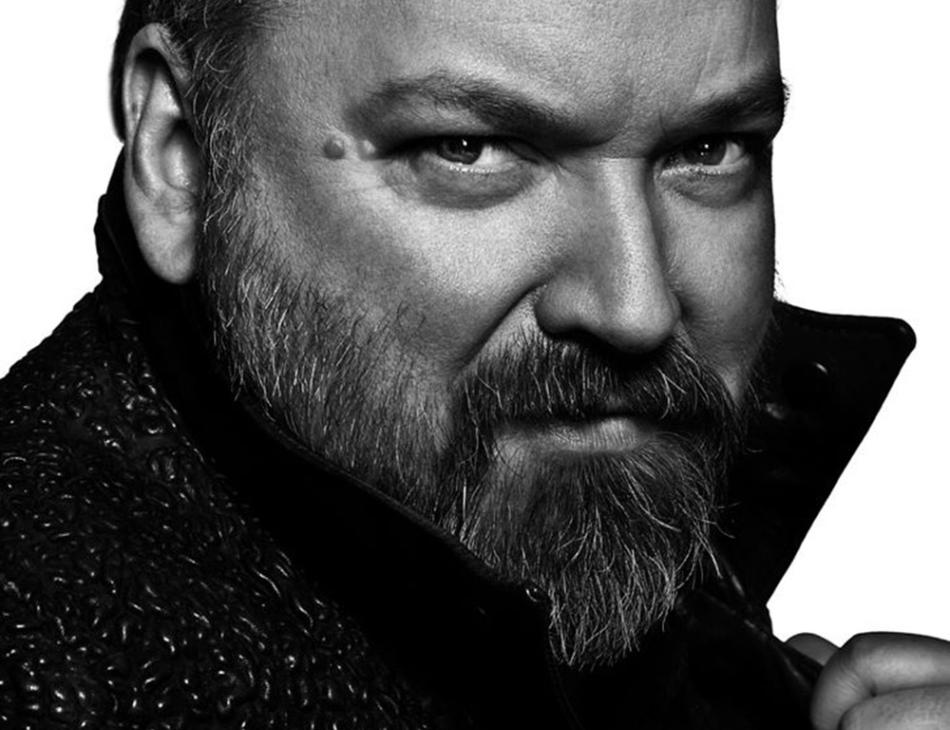Interview with Legendary Contemporary British Artist Dave McKean
Dave McKean is one of the leading and most prolific artists in Britain, most known for his Sandman covers with writer and film maker Neil Gaiman. He is a photographer, comic book artist, graphic designer, filmmaker, musician and his commercial work has been used for some of the best album covers, comic covers, leading brand advertising and films. He has recently collaborated on books with Richard Dawkins and Heston Blumenthal and is constantly in demand. He also recently completed his latest film Luna about a couple who spend a weekend at the seaside after losing a child, which explores the fragile relationship between fantasy and reality.
His work employs so many different techniques it is difficult to pin down, he used collage, photography, illustration, objects, sculpture, computers, photocopying, pretty much anything that he feels will make the final work better and he is accomplished at all of these skills. His work often has a dark and mythical flavour with a powerful emotional punch and really needs to be seen in the flesh, do try to catch one of his exhibitions if you can. He is one of International eXcellence favourite artists and we will keep you updated on his new work as it appears.
International eXcellence also recommends this amazing contemporary English fine artist as a great potential investment, you will be amazed by the quality and breadth of his work. See below for where to find original pieces by a master.
We’ll let the man speak for himself.
Interview with Dave McKean:
- Where did you grow up and what was your childhood like?
I grew up in Berkshire, west of London. I had a basically happy childhood, living in a village, and easy bike ride away from fields and woods. I played piano and started performing in bands at secondary school. I can’t remember not drawing, initially animals and dinosaurs, football players and soldiers. My mother worked at the local infants school, and was hugely supportive of everything I did, my father also played piano, in stride style, and could draw, but he never got to pursue these talents professionally. He died when I was twelve. I think he wanted me to be an accountant or something safe and financially secure. I think we would have had some arguments when I hit my teens, and especially when I wanted to go to art school.
- What was it about comics that made you want to become a visual artist and what other media influenced you?
I loved the combination of image making and storytelling. I also had a Super8mm. camera to play with, so I was always drawing comic strips and making little films.
- What were the biggest challenges to succeed as an artist?
I’m still working on that one. It depends how you define success. Initially I just wanted to be able to work full time doing creative things, drawing and painting, illustrating books and comics, design. I’ve tried to keep a balance between commercial work and my own work. It took a few years for those two strands to converge. But I realised pretty quickly that the personal work I was doing was much stronger and more satisfying than the paying jobs, and also almost always led on to bigger and better things, whereas the jobs were forgotten.
If you define success in the most important sense, creative success, then I’m still chasing that goal. I have done a few books, and finally a film, that I’m happy with, but there is always so much to learn, and the work can always be improved.
- How did the lifelong collaboration with Neil Gaiman come about?
We were both working on a magazine called Borderline that never happened. Neil was a struggling journalist and I was still in art school. I was writing and drawing two stories, and Neil was writing three I think. A group of us would meet up in London every month and show each other the work we were doing. I think we were both very ambitious. Neil wanted to write comics full time. He’d written a short story called Violent Cases in a workshop, and gave it to me to read. I thought I could turn it into a comic story, and Paul Gravett at Escape magazine wanted me to do something, so I thought it might work out. In the end it became a much longer story than the 6 or 8 pages Paul wanted, but he decided he still wanted to publish it. That became our first published book. We showed it, still unpublished, to editors at DC Comics, and never looked back.
- You illustrated all the Sandman comic covers, any particular ones stand out for you and why?
It was interesting doing a cover a month for seven years on Sandman because it functioned as a diary. They charted my changing taste and interest in different media. I started using photography and Photoshop during the run. I played around with colour photocopiers and multiple exposures, typography and sculpture. So in a way, they all bring back memories of where I was, what music I was listening to, the conversations with Neil as the series developed and a concentrated period of growth in my life. I barely looked up from the drawing board, and it was only when it was all done, that I realised Sandman had created quite a stir and had found an audience outside of the usual comic store crowd.
- How did you keep such complex work to tight deadlines that are typical in the comics industry?
Initially Neil was well ahead and would give me complete scripts to read and work from. But the complexity of it all started to mean that Neil was taking longer and longer to complete his scripts, and I was working from outlines, and then just brief telephone calls. But the covers themselves only took me a day each, so I was able to work on other books and then music industry projects and my own work. But I had a strong idea of what sort of covers I wanted to do, and who I was speaking to. My imagined audience read comics, but also was attracted to certain record covers, book covers, art and design. What I was doing was unusual for comics, but not at all unusual for book or record stores.
- What other great collaborations have you enjoyed working on over the years?
I’ve been lucky. I did Arkham Asylum with Grant Morrison when he was starting to stretch creatively and really look outside the comic medium for inspiration. We both loved Dennis Potter plays and Jan Svankmajer films, and a lot of that ambition went into the book. I’ve worked a lot with the extraordinary Iain Sinclair on books and films; I love walking around in his head for a while. I’ve done a few projects with John Cale, a book with the evolutionary biologist Richard Dawkins, and two huge books and restaurant projects with Heston Blumenthal. I’ve worked with Michael Sheen on the film version of his Passion of Port Talbot theatre project, and with Wildworks, the site-specific theatre company who produced it. I’ve had a long working relationship with sax player and composer Iain Ballamy, and music producer Ashley Slater. I’ve now done three books with David Almond and another three with SF Said, and many others over the years. All of these have been wonderful, creative collaborations, and I’ve enjoyed playing with other people’s toys. I’m still looking for more interesting and provocative partners.
- You have also illustrated many leading commercial campaigns and music album covers over the years, which stand out for you?
The long term ones really, it’s been great to develop an ongoing world of imagery for certain artists; Iain Ballamy, Bill Bruford, Michael Nyman and Bill Leeb of Frontline Assembly stand out. I run Feral records with Iain, so those covers and cd boxes we’ve created together are my favourites.
Advertising jobs are usually pretty compromised affairs, although some of them have gone through fairly easily.
- You mix all forms of illustration, collage, digital, photography and styles in your work. How do you approach a particular brief or idea, could you take us through the creation of one of your favourite works?
They are quite different, but there’s usually a text that keys everything, either a script, or a brief or lyrics, something that I can grab hold of and work from. Sometimes I’ll write my own brief if necessary. This keeps me focussed on what has to be communicated. Usually the style, tone, colouring, general feel of the piece will be inferred from the brief, the text is everything.
The cover for John Cale’s Circus CD was inspired by the lyrics of many of the songs, including some Velvet Underground material that he performed in this live concert. Also it came from my memory of seeing Elton John’s Captain Fantastic album cover by Alan Aldridge when I was a kid and loving all the little stories and details. So I did my own darker, seedier version for Cale.
The CD covers for Bill Bruford were left entirely up to me. I liked Bill’s sense of humour and the intricate textures he created with his band Earthworks. Also, having moved to jazz from Yes and King Crimson, I thought it would be good to keep a slightly otherworldly, surreal atmosphere to the packaging to bridge the gap, and also to add a little real world grit to the backgrounds to suite the jazzier, earthier nature of the music.
- You’re also an accomplished musician, what do you play and what music do you love?
I play piano and drums, and sing if pushed. I love all sorts of music; it’s been a huge part of my life. I love jazz, and great singer songwriters; I love folk music from around the world, especially tango and Spanish music. I like some orchestral music, especially from the early 20th. Century, and I like some minimal, abstract, industrial, and generally noisy stuff. Not so keen on opera (mostly for that very narrowly focussed singing style) or country music, or the huge chart led commercial pop/rock middle ground, although even here there are performers and bands I really love. My own music tends be pretty uncatagorizable with influences from all of the above plus cabaret and the strain of surreal and humorous songwriters peculiar to England – Ivor Cutler, Jake Thackray…
- You have also produced three illustrated travel books, can you tell us a little about these?
I’ve always sketched while travelling, but I started making my little Postcard From… books after a visit to Vienna with my family. I bought the kids sketchbooks and we all made drawings of the city and the paintings by Klimt and Schiele we saw. It was wonderful, my kids remembered everything from the trip with a clarity you only really get when you draw, when you really pay attention.
I’ve made several city books now, and I’m continuing with Naples, Venice and Prague. They are not definitive travel books in any way, they are just my impression of what I happen to see while there, the people, streets, food, art, music and buildings.
- What great mentors or influencers have you had in your life?
So many. Certainly I had four really great teachers while at art school, George Glenny taught drawing and semiotics, Malcolm Hatton taught design and gave me commercial work in the evenings, Jim Kane had a real professional edge to his expectations of us as students, and Leo de Frietas was a visiting lecturer who is still a good friend and agent provocateur in my life. The big guns are Picasso and Miles Davis for their restless reinventions of themselves, and then so many more, from Marshall Arisman who delivered a life changing talk at the ICA while I was still in college, to Lorenzo Mattotti who continues to teach me with every mark he makes.
- In 2008 you worked on The Fat Duck Cookbook with Heston Blumenthal, what interesting challenges did this unusual tome present?
A cookbook has none of the important information you really need, you can’t taste, touch or smell the food. So I tried to create imagery that attempted to fill in some of these gaps with abstract representations of how the food played with your senses. There were also biographical details to illustrate and some specific stories that Heston wanted included. Also, he wanted an Alice in Wonderland playfulness, and also some of the science was very particular. He was wonderful to brainstorm with, a genuinely open minded, completely engaged collaborator. I can see how he has progressed so far so quickly.
- You recently produced the book “The Magic of Reality” with Richard Dawkins, what was the process there and how did you and Dawkins work together?
Again, a fascinating experience. I was a huge fan of Richard’s writing, and championing of the scientific method in how we decide what is true and false in our lives. The science here was very specific and important to get accurate, so this needed a bit of adaptation from my usually more impressionistic style. But once I got into the swing of it, it was wonderful, only slightly spoilt by a dreadfully conservative and difficult publisher. I still feel the book could have been so much more exciting, but I’m happy with my drawings, and that it got done at all.
- What are you reading now and what great books or comics would you recommend?
I’m reading almost exclusively non-fiction at the moment, I want to know things. I love Tom Holland’s historical books and the various popular science writers around at the moment. And I never get tired of reading biographies; I’m reading Michael Powell’s at the moment.
I don’t read any regular comics, but I pick up the odd graphic novel, or compilation when something jumps off the bookshelves. I recently discovered Gipi’s books, which are really beautiful, and elegantly told.
- You create the imagery for many children’s books, what do you love about them?
Well, first of all there is still a feeling, especially in England, that books with illustrations in them must be for children. Fortunately that is changing, but it’s a slow process. I love the openness and imagination in children’s books, but also I think they’re a wonderful and safe place to talk about really rather serious things that we all face, to a young audience – a gentle rehearsal for our adult lives, a way to discuss difficult things. The best kids books live with us as we get older and change their meaning as we re-contextualize them.
- You have directed quite a bit for film and television, including the film Mirrormask and Luna, are you working on a new film projects?
Yes, I’ve just finished Luna. My collection of short films will get a proper release later this year and I’m starting to plan a new feature film called, at the moment, Callisto and the Wolves. Another collaboration with Wildworks.
- What is your favourite activity when not working?
I play badminton, music, and cook; I love driving around the UK, picking an area to explore. I can highly recommend a drive around Scotland.
- What actions do you take to keep a certain quality of life?
I prefer to do my own projects, or work I have a high degree of control over, rather than be a cog in a large machine.
I think my main responsibility to the people who like my work is to make that work the very best I can. Which means I don’t do a lot of conventions, signings and personal appearances, I’m just too busy getting the work right. It also means I can stay at home with my family, and feel like I have strong foundation below me in the people and the place around me.
I determined a few years ago to only have work and play days. That sounds obvious, but when you’re self employed it’s so easy to spend a day trying to work when I just don’t feel inspired, or not working and feeling guilty about it, rather than just taking a day off and forgetting work, or buckling down and doing the work. One or the other, not the awkward nothingy days in between.
I have a few really close friends who’s opinions I trust. Especially with films, I try and show them work in a state that I can still change it. It’s so helpful to have another pair of eyes look at something that I’ve spent so long trying to shape.
I like a few regular ticking clocks in my week – every Monday and Wednesday I play badminton, every Tue. I’ll play music, every first Thur. of the month I’ll perform at a songwriters club, every Friday lunch I take off and go out and read the newspaper. Obviously life gets in the way sometimes, but I like these little regular ticks, the rest of my life is so chaotic.
- What are you working on now and what are your plans for the future?
Luna is the big thing for me at the moment and starting to plan Callisto.
I’ve finished a new book of short comics called Pictures That Tick 2: Exhibition, which I’m really happy with. I’m working on a book of paintings and drawings inspired by silent cinema called Nitrate, and a new graphic novel called Calligaro. Also a book collecting all the Dreaming and Sandman Presents covers I did for DC Comics called Dream States as well as anniversary editions of Mr. Punch and Arkham Asylum. I’m going to be playing my live 9 Lives show at the British Library in June, and I’m working with Iain Ballamy and the poet Matthew Sweeney on a theatre project for next year. I have a bunch of other things on my drawing table, or rattling around my head and sketchbooks at the moment.
- Could you list a few things, people, works that you consider excellent?
Well, excellence tends to get recognized, because there’s an awful lot of good, and even very good in the world, but not a lot of excellent.
But some lesser knows examples?
Chris Wood I think is the best singer songwriter around at the moment.
Benet McLean, Jason Rabello and most of all Stefano Bollani are staggering piano players.
Mattotti continues to inspire me.
I think Spike Jonze and Michel Gondry are wonderful filmmakers in this digital age, and of course Charlie Kaufman is a great screenwriter.
On Luna I’ve been fortunate to work with some amazing people, not least Dhafer Youssef and Emilia Martensson who sung on the soundtrack.
There are so many…
Find out more here:www.davemckean.comwww.allenspiegelfinearts.comwww.keanoshow.comwww.cent…


